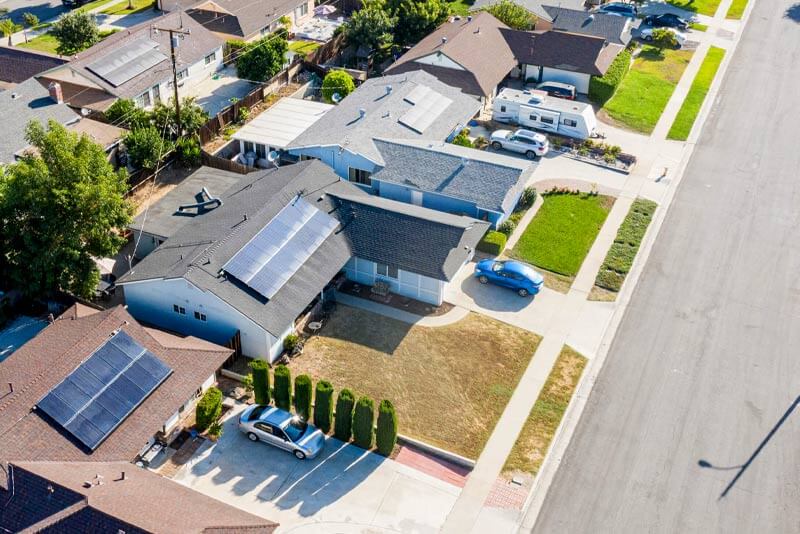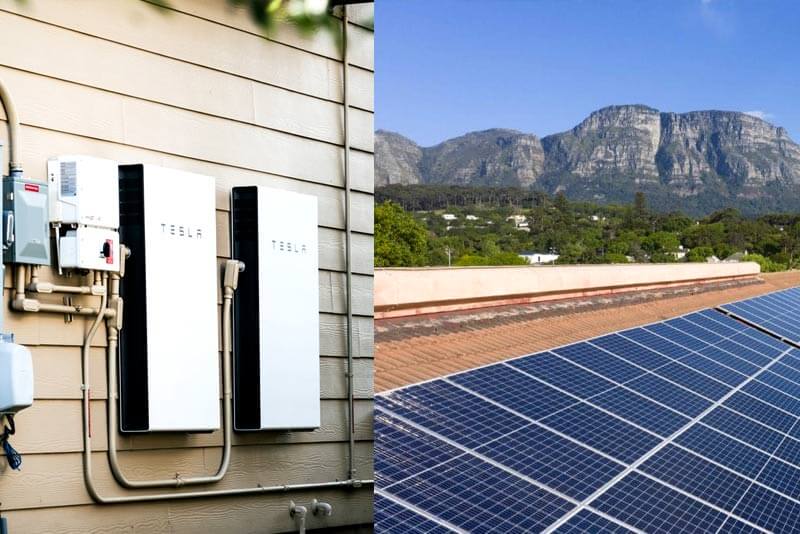Home Virtual Power Plants What Is a Solar Virtual Power Plant VPP?
What Is a Solar Virtual Power Plant VPP?
Can solar energy enhance the electricity grid? Without a doubt, Virtual Power Plants prove that it can be done! It’s genuinely beneficial for both the electricity network and those top-notch individuals with solar batteries who contribute their power.
Virtual Power Plants or VPP refers to a connection or network of solar batteries exporting part of their stored electricity to the grid. In return, owners of the batteries get a credit on their electricity bills.
VPPs are often regional, controlled remotely, and require members to have a specific solar and battery system capacity.

Table of Contents
ToggleHow does a virtual power plant work?
A VPP has an operator. The operator uses WIFI and a remote control unit to connect all the participating batteries. It enables the operator to access the batteries and take out a portion of the power from the battery as agreed with the owner.
With several solar battery systems working together, small amounts of power can accumulate to power a city.
When an individual joins a VPP network, they must sign a contract that indicates how much power they would like to supply to the grid via the network. It ensures that you also have sufficient power for your use if need be.
Each battery owner is paid for the amount of power they supply to the grid.
Features of a VPP
Below are the main features of a virtual power plant.
Solar batteries
VPPs are based on solar batteries. For example, the WA VPP is based on the Tesla Powerwall battery. Other programs use different batteries in different regions.
To join a VPP, you must have the approved solar battery for the program.
Since a VPP is controlled remotely, you must have a solar battery system that is compatible with the controlling software. It makes it possible for the controller to access, monitor, and get power from your battery
Eligibility requirements
To be eligible to join a VPP, you must be in a participating region. VPPs are regional. Also, you must have the applicable solar batteries and your solar system must have the required capacity.
Additionally, your home must also be connected to grid power.
VPP subsidy
Some VPP programs pay new entrants an upfront joining fee that ranges from $100 to $3000. VPPs are too intense for solar batteries. Batteries in a VPP program lose their efficiency much faster than others. The subsidy helps lower the cost of the battery, to facilitate replacement.
Other programs do not have a joining fee. However, you will get an allowance paid annually or quarterly based on the amount of power generated by your battery system.
You can also get a program that offers a signing bonus and an annual or monthly bonus or credit towards your power bill.
There are also VPP systems that do not pay anything.
The VPP program you join depends on the battery system you possess and your location.
Solar system capacity
Different Virtual Power Plant programs require their members to have a solar system with a given capacity.
Depending on your region, the minimum solar system capacity ranges from 3Kw to 5Kw. When you meet the minimum solar system capacity, you are eligible to join the available programs.
Scale of the program
The more people in a VPP program, the more power it can export to the grid and the more efficiently it can manage members’ solar batteries.
The WA Tesla Powerwall VPP targets to have 1,000 batteries in its network. Smaller VPP programs in different regions are capped at 1,000 members. Still, some programs have no limit on how many households can join.
Minimum energy storage for battery owner
It refers to the amount of energy stored in the battery reserved for the homeowner. When you purchase a solar battery system, you are seeking energy independence.
Joining a VPP implies that you cannot use all the power stored in your batteries. Thus, you need to agree with the program on how much of the stored power it will consume and how much is reserved for your use.
In most programs, homeowners choose how much power they want to consume and how much can get exported to the grid. It can range from 20% to 80% of the power stored in the batteries per month or any other period as agreed.
Energy plan rates
It refers to how much you earn from the program for allowing it to use part of the power from your batteries.
If your VPP program is managed by an electricity retailer, you can get the already existing feed-in tariff rates for exporting excess solar power to the grid.
Additionally, the VPP program offers a usage rate. It is how much you get paid by the program for using your power.
Choose well to ensure that you can increase your savings on ever-rising electricity bills.
Contract term
Depending on your region, some VPP programs require that members sign a contract stipulating how long they will remain members of the program. Other VPP programs do not have a contract term as a requirement.
VPP contract terms range from 1 to 10 years.
Contract cancellation fee
Some VPP programs have a contract cancellation fee for when you want to stop being part of the program. It ranges from $100 to $12,000.
However, depending on the program, the cancellation fee decreases the longer you are in the program.
Some programs will charge you the amount of the battery subsidy as the cancellation fee.
Benefits of a virtual power plant
- Increase the savings on your electricity bills. When you join a VPP, you get paid for the amount of power exported to the grid from your solar batteries. How much you get depends on the program. Additionally, you can get additional payments over your feed-in tariff or you can get a lower rate on your electricity bill if your PPP is managed by an electricity retailer.
- Helps build a modern electricity grid. Power producers are seeking ways to increase the use of renewable energy in the grid. PPPs help to develop and enhance the use of low-carbon solar power in the grid.
- Enhance the reliability of grid-supplied electricity. Helps reduce the occurrence of blackouts during peak times as power from VPPs plugs in the deficiency in the grid.
- Many households with smaller power generation capacity can provide lots of power to the grid when they come together.
- Easy monitoring of solar batteries, power usage, and power exported to the grid.
- It is remotely controlled over the internet which ensures it does not need land or destroy the environment.
- Due to automation, it can supply power based on demand rather than a continuous supply that is interrupted at peak times.
- Battery subsidy. If you buy a battery through a VPP program, you can get a discount.
- VPP rates are higher than electricity retailers’ feed-in tariffs.
Disadvantages of a virtual power plant
- Solar battery discrimination. Many VPP programs have a bias on the type of solar battery they want their members to use. As a result, many solar battery owners are locked out of the program as they cannot buy another battery.
- Often, the battery owner does not have control over how much power is exported to the grid. Consequently, they cannot tell whether the rate they are paid is the correct amount.
- When you have no control over how much power is used from your battery, you may be in darkness during a blackout. Yet, you purchase solar batteries to prevent being in the dark when a blackout occurs.
- Due to the intensity of discharge from your battery, it loses its efficiency fast. Consequently, it shortens its lifespan and you may have to replace your batteries before their time.
How to participate in a virtual power plant program
You need to meet all the eligibility requirements to participate in a virtual power plant program.
- You must have the approved battery for the program. Many VPP programs are controlled by solar retailers who sell their batteries. Electricity retailers also partner with solar retailers to run a VPP program.
- Have the required solar system size. Depending on where you live and the VPP you want to join the minimum capacity of your solar system should be 3-5kW. In this way, your solar system can generate more power than you can consume in your household.
- Find a VPP program that will accept your battery. Ensure that their eligibility requirement is suitable and apply to join.

Table of Contents
Toggle




